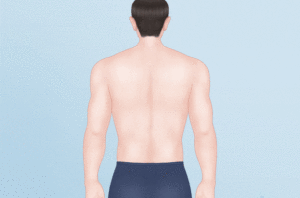Cupping is a method of using a cup as a tool, using heating and suction to create negative pressure inside the cup, so that the cup is attached to acupoints or certain parts of the body surface, causing local skin congestion or even blood stasis. Cupping has the functions of strengthening the body and eliminating evil, regulating yin and yang, unblocking meridians, regulating internal organs, dispelling cold and dampness, and promoting qi and blood circulation. It can prevent and treat diseases, improve skin problems, and lose weight to a certain extent.

Target Group
Cupping is suitable for patients with facial paralysis, erysipelas, and styes. In addition, patients with abdominal pain, neck, shoulder, waist, and leg pain, joint pain, soft tissue sprains, colds, headaches, coughs, asthma, indigestion, diarrhea, irregular menstruation, and dysmenorrhea can also relieve symptoms through cupping.
Taboo group
1. People with highly sensitive skin or a series of skin problems such as damage, ulceration, etc.
2. Patients with traumatic fractures or malignant tumors in the treatment area.
3. People with bleeding tendencies, such as hemophilia, thrombocytopenic purpura and leukemia.
4. Women during menstruation, pregnancy and lactation.
5. Patients with heart failure, renal failure, ascites due to liver cirrhosis, or severe edema of the whole body.
6. People who are sick of canning.
Technical/surgical risks
1. Erythema and purpura: Erythema or purpura caused by blood stasis may appear locally after cupping. This is generally a normal phenomenon and will disappear on its own after a few days.
2. Blisters and burns: Improper operation by the doctor may cause blisters and burns. Those with mild symptoms can be absorbed by themselves. Those with severe symptoms need to seek medical treatment in time.
Postoperative Care
After treatment, attention should be paid to local care, diet conditioning and lifestyle behavior management.
1. Local care: Pay attention to local care after cupping, ensure the skin is clean, and avoid getting the cupping area wet; if local skin becomes red, swollen, itchy or painful, it is generally not recommended to continue cupping.
2. Diet adjustment: advocate light diet and prohibit smoking and drinking.
2. Lifestyle management: Drink a cup of hot water after cupping, do not take a shower or drink cold drinks within 2 hours, rinse with hot water after 2 hours; pay attention to keeping your body warm and relaxing, do not do overly intense exercise; do not cupping repeatedly in the same position.
Preoperative precautions
1. Communicate with the doctor before treatment to understand the specific process of cupping, related risks, possible effects, etc., and be mentally prepared.
2. If the treatment area has a recent history of surgery, trauma, use of special medications, or implantation of other cosmetic fillers, you must inform your doctor in advance.
3. Determine whether there are skin infections, acute or chronic inflammations at the treatment site, and delay treatment if necessary.
4. Avoid being too full, too hungry or too thirsty.
5. Maintain a light diet and avoid spicy, stimulating and greasy foods.
6. Do not smoke or drink before treatment.
7. Clean the area properly before treatment and do not put makeup on the treated area.
Surgical Procedure
Cupping methods include cupping, moving cupping, flash cupping, pricking cupping, and needle cupping. They can be applied to many parts of the human body, such as the face, back, abdomen, and lower limbs. Here, the back cupping method is taken as an example. The operation process of the back cupping method mainly includes applying lubricant, pressing the cup, and removing the cup.
